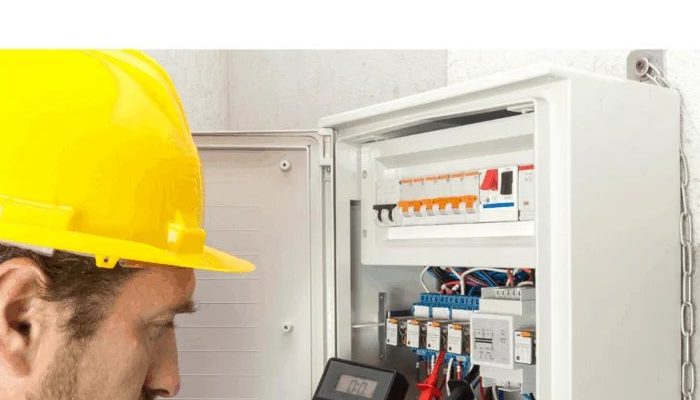
In this article, we’ll walk through the best ways to guard your appliances from those pesky power surges, using common language and relatable examples. You might be wondering how these surges happen or if your devices really need extra protection. Trust me, it’s easier than you think, and I’ll break it down for you step-by-step. Let’s get started!
Understanding Power Surges
Before diving into protection methods, it’s crucial to understand what a power surge actually is. In simple terms, a power surge is a sudden increase in electrical voltage. This can happen for various reasons, from lightning strikes to faulty wiring or even just turning on a major appliance. Imagine it like a wave; normally, the water is calm, but every so often, a big wave crashes in, causing chaos.
Now, why do these surges matter? Because they can damage or destroy your appliances. Think about your refrigerator, washing machine, or even your TV. All these devices have delicate components that don’t take kindly to sudden voltage spikes. Even if your device survives a single surge, it could still wear down its internal mechanisms over time. So, protecting your gadgets isn’t just smart; it’s essential.
Use Surge Protectors
One of the easiest and most effective ways to shield your appliances is to invest in quality surge protectors. These handy devices work like a safety net. When too much voltage hits, they absorb the excess energy before it reaches your appliances.
There are different types of surge protectors—some are designed for specific devices, while others offer multiple outlet options for load sharing. For example, if you have a home theater system, you might want a surge protector specifically designed for electronics. When choosing one, look for a joule rating; the higher the rating, the better protection it provides. Aim for a surge protector with at least 1000 joules for basic devices and more for high-end electronics.
Placing surge protectors in strategic locations—like near your TV, computer, and refrigerator—can save you from costly repairs or replacements down the line.
Unplug During Storms
Here’s the thing: if you know a storm is coming, don’t just sit there hoping for the best. Take a couple of minutes to unplug your appliances. It’s like moving your car to the garage before the hail hits. This simple step can significantly reduce the risk of damage from any unexpected surges caused by lightning or strong winds.
You might think, “I can’t keep unplugging everything every time it storms!” I get that. It’s not practical for every single appliance. But focusing on key devices like your computer or entertainment system can save you from major headaches later. Plus, if your appliances don’t have to deal with a storm’s stress, they’ll last longer, which is a win-win.
Upgrade Your Home’s Wiring
Sometimes, the issue isn’t just with your appliances but with your home’s electrical system itself. If you live in an older building, the wiring might not be equipped to handle modern electrical demands. Upgrading your home’s wiring can be a game-changer, especially in a busy area like zip code 20004.
Call in a professional electrician to assess your system. They’ll check for any outdated wiring, grounding issues, or faulty circuits that could contribute to power surges. A well-maintained electrical system not only protects your devices but also increases your home’s overall safety. Plus, having new wiring might give you peace of mind that your gadgets are safe from unexpected voltage spikes.
Install a Whole-House Surge Protector
If you want to go the extra mile, consider installing a whole-house surge protector. This device sits right at your main electrical panel, providing an overarching barrier against surges. It’s like having a fortress around all your electrical devices.
The beauty of a whole-house surge protector is that it protects everything in your home—lights, outlets, appliances, and even your wiring. While they can be pricier than individual surge protectors, the investment can pay off in the long run by protecting all your electrical devices from damage. Plus, knowing that every device in your home is safeguarded can give you a nice sense of comfort.
Regular Maintenance and Checks
Prevention is key, and regularly maintaining your appliances can help them withstand power surges better. Just like a car needs regular oil changes and check-ups, your appliances can benefit from some routine TLC.
First, regularly check the cords, plugs, and outlets for any signs of wear or damage. If you notice frayed wires or scorch marks, it might be time to replace those items. Not only does this help in preventing surges, but it also reduces the risk of electrical fires.
Additionally, keep your appliances clean. Dust and grime can interfere with their performance. Think of it as giving them a spa day; clean appliances function better and are less likely to have issues when a surge occurs.
Protecting your appliances from power surges in zip code 20004 doesn’t have to be a daunting task. By understanding what surges are and implementing methods like using surge protectors, upgrading your home’s wiring, and practicing regular maintenance, you’ll create a safer environment for all your cherished gadgets. Remember, investing a little time and effort now can save you big bucks later on repairs or replacements.
So, the next time you hear thunder rumbling in the distance, you’ll feel confident knowing you’ve taken the right steps to keep your appliances safe and sound. Protecting your home is all about being proactive—and with these tips, you’re well on your way!
